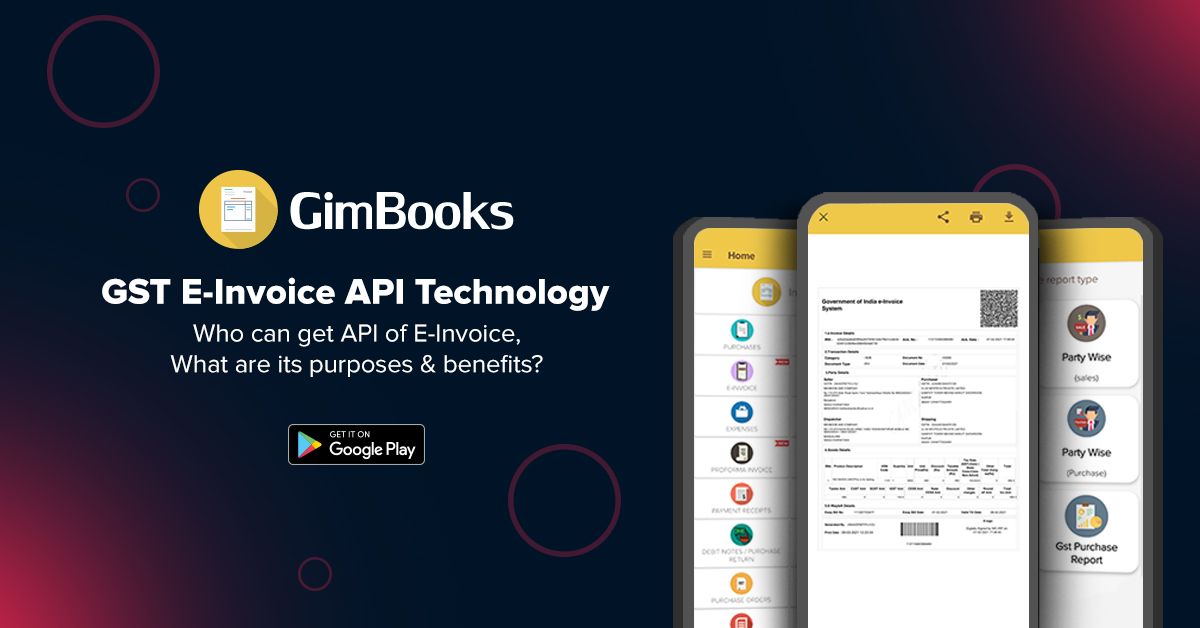What is API?
API ( Application Programming Interface) is a software that allows two applications to interact with each other. E-invoice APIs are used to interact and exchange the data between taxpayer/GSP System & e-invoice systems. The data that is exchanged is encrypted and the Restful API’s are exposed over SSL (Secure Socket Layers).
As per the API specifications, two separate software components will be needed to provide GST services to Taxpayers.
Who can use API?
GSPs & Taxpayers can use API to perform GST compliance related activities such as filing of returns, registrations, viewing ledger, making online payment etc.
The categories of taxpayers that are eligible to use API are:
- Turnover More than Rs 500 crores - applicable from 1st october 2020
- Turnover more than Rs 100 crores but less than 500 crores - applicable from 1st January 2021
- Turnover more than Rs 50 crores - applicable from 1st April 2021
How can e-invoice be generated with the help of API?
API has got its big role in the generation of e-invoice. All the details of the invoice needs to be filled by the taxpayer into the accounting system. Through API, the data is sent to the Invoice Registration Portal (IRP) and then the Invoice Reference Number (IRN( gets generated. The e-invoice is then sent back to the taxpayer with digitally signed e-invoice and the QR code which has all the information related to the invoice.
The final output is the invoice with IRN and the QR code embedded in it.
What is the purpose of using APIs?
For the successful implementation of GST, it should be convenient for the Taxpayers. They can use third party applications to connect with the GST filing system via GST APIs thus, enhancing the taxpayer convenience.
This is an extra security feature, which allows taxpayers to control API access to his account on the GST Portal.
Under e-invoicing, taxpayers generate e-invoice under their ERP software and will report the same on the Invoice Registration Portal. The taxpayer/GSPs can integrate APIs into their ERP & can generate e-invoice directly through their system.
E-invoice API List
- Authentication - For establishing connection between ERP system & taxpayers via API
- Generate IRN - For generating IRN by registering invoice with IRP with optional fields for EWB generation
- Cancel IRN - for cancelling a generated IRN
- Generate EWB by IRN - for generating EWB using IRN generated
- Cancel EWB - for cancelling EWB generated through IRP
- Get E-invoice by IRN - fetch data for e-invoice by IRN
- Get E-invoice by document details - Fetch data for e-invoice by document type, Number & Date
- Get EWB by IRN - Fetch EWB details by IRN
- Get GSTIN - Select Taxpayer details with EWB block status
- Sync GSTIN details from Common Portal - to update the NIC taxpayer database from GSTN common portal
- Health Check API - Checking working condition on NIC System/ APIs
Benefits of APIs
- It enable the taxpayer to enter the data only once in their ERP and API will automatically transfer the data to GST portal and e-way bills
- API provide smooth integration between ERP and the e-invoice system
- API eliminates the data entry errors.
- API avoids double entry of an e-invoice
Conditions for using API for e-invoice
- GSPs/Taxpayers needs to automate the process of invoice generation
- GSPs/Taxpayers should meet the security requirement specified by https://cert-in.org.in/
- GSPs/Taxpayers must comply with the Information technology Act 2000
- GSPs/Taxpayers need to make sure that the traffic reaching from their end to the E-invoice system is free from viruses, malware etc.
GimBooks is an automated, integrated and seamless e-invoicing software. It is one stop e-invoicing solution without any disruption to your business.
Also Read,
